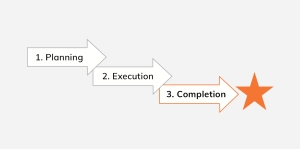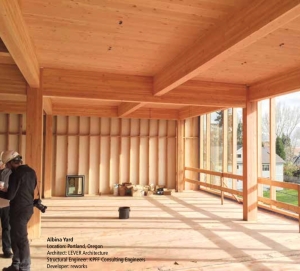Best Practices Commercial Building Construction US
Essay to Building Owners: Get it right before spending money
Common sense....
In commercial life, it is a common best practice to have a business plan before spending a lot of money. This concept applies to planning, designing, and building (and paying for it). Why then is it so common to hear: "it cost more", "the schedule was really late", "I was disappointed in the design but it was too late to change". Here is a perspective
Innovative site selection and program development
Visible City (Jon Commers and his group) are on the midwest planning scene. They are analysts and planners using high end business intelligence tools including applied GIS (Geographic Information Systems). These tools crunch data in many ways including producing "smart maps": visualizations that reveal hidden development opportunities. Users of the visuals are often heard saying: "I haven't seen that before (despite all my driving around)."
More about Successful Project Completion ("FFE")
If you have read the post about “Successful Project Completion” then this post helps with some critical details: the concepts of FFE and fixed FFE (i.e. “Furniture, Fixtures, and Equipment”)
FFE (fixed or otherwise) is needed to complete your project and isn’t always expressly included in traditional design and construction services. Examples are:
- Security systems (designers and builders don’t want the liability)
- Data and communication systems (often part of the business work flow)
- Furniture and accessories (includes plants and specialties)
- Modular furniture and work stations (often called “cubicles”)
- Decorations (includes wall art)
- Special equipment (cooling systems for computer equipment etc)
Successful Project Completion
At Wilkinson Building Advisors (“WBA”), projects have 3 stages:
- Planning and setup
- Execution and administration
- Project completion
This post is about Project Completion, the stage when the Owner has spent a lot of money and needs to move in and commence operations in order to derive value from the investment.
For Investors; manage your risks, know your costs upfront
A contract is an agreement about how risk is allocated in the deal; risk is priced into the deal. Each party to the contract negotiates for, and eventually agrees to the price of performance. The specter of risk sits on the shoulders of the contracting parties. When risk is substantially speculative, as compared to known, then contract negotiations and subsequence performance are distorted.
Many processes in the AEC+dev industry are “poster children” to the proposition of contract and performance distortion resulting from mis-allocated risk. Cost ignorance is high among the usual suspects.What is the probability of project successful when this outcome is premised upon blind hope in lieu of skilled calculation?
Essay to Owners: Start well.. save $
(For purposes of this document, planning, design, construction, and development of real property (a.k.a. buildings) will be referred to as the “AEC” industry.)
It is common that many customers to services in the AEC industry seldom do business there and in many cases the project undertaken is a "one-off." Furthermore, these customers find themselves in the position of attempting to manage many intertwining contracts while all at the same time successfully operating the business that brought them to needing more in the way of property (buildings). These conditions, in and of themselves put up barriers to success, but there are more equally significant obstacles lurking at the outset.
Essay to Investors: Save the planet with timber and energy design
Applied technology in the building industry is now at a tipping point. The intersection of timber construction technologies with indoor climate energy exchange and management is creating powerful new market opportunities.
When design-build is good, it can provide a groundswell of innovation
The cultural headwinds have long been on the bow of the so-called design-build movement. It took nearly 50 years of cultural warfare for the various participants to see their integrative potential. It is easy to see how the cultural divide is built into the DNA of the various designers, engineers, builders, salespeople, financial engineers, and business managers; they are all different people with different worldviews and ways of behaving. The marketplace finally demanded cooperation and collaboration. By the 1990’s, the acceptance of the design-build approach was no longer in dispute.






